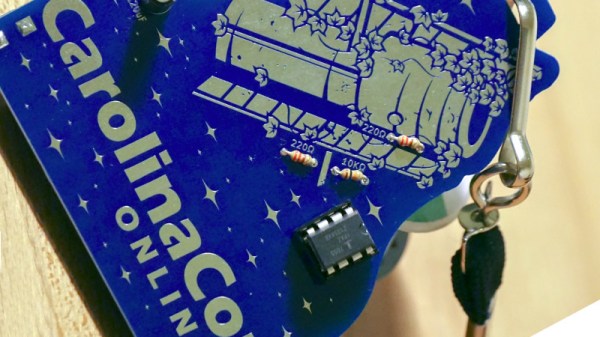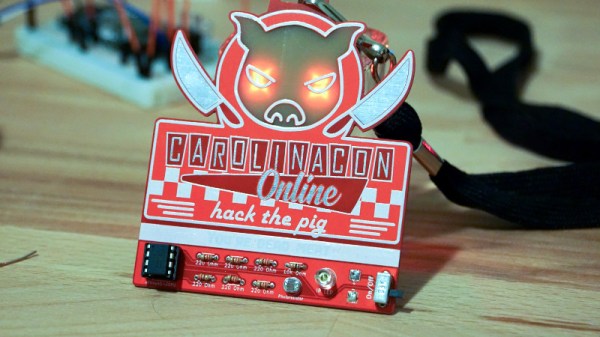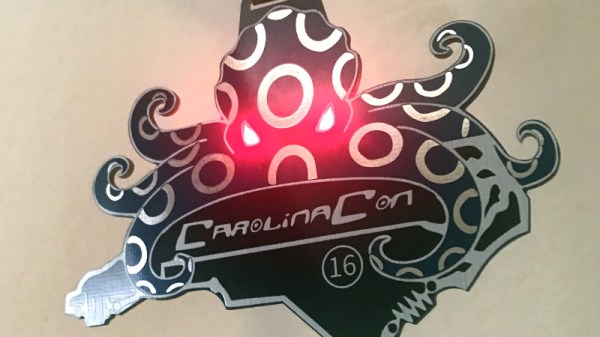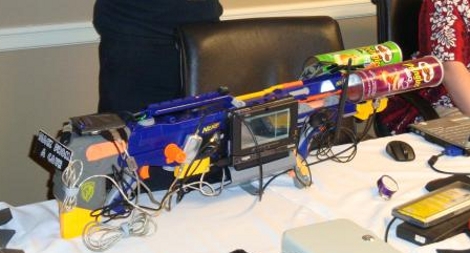For the electronic badge enthusiast, these last two years have seen something of a famine. While the pandemic may not be over yet, we’re learning to live with it in 2022, and there’s the prospect of a flush of new badges even if not all events are in-person yet. First to reach us is the Carolinacon Online 2 badge, a fairly simple affair which naturally has us pleased as punch because it incorporates the only chip that’s guaranteed to get you through the semiconductor shortage, an NE555 timer. It’s got everything, a flashing LED, and, well, that’s it because with the best will in the world a 555 is no powerhouse on its own. As a memento and a way to support the event it fits the bill, but it’s fair to say that this is no electronic tour de force.
Carolinacon Online 2 launches on Friday 29th of April, and features a schedule of talks and a set of merch including the badge. If you’re thinking of previous Carolinacon badges, this event has always taken the simple-but-effective route. The version they produced in 2021 for example had a hidden message behind the silkscreen, revealed through clever placement of LEDs controlled by an ATtiny microcontroller.















